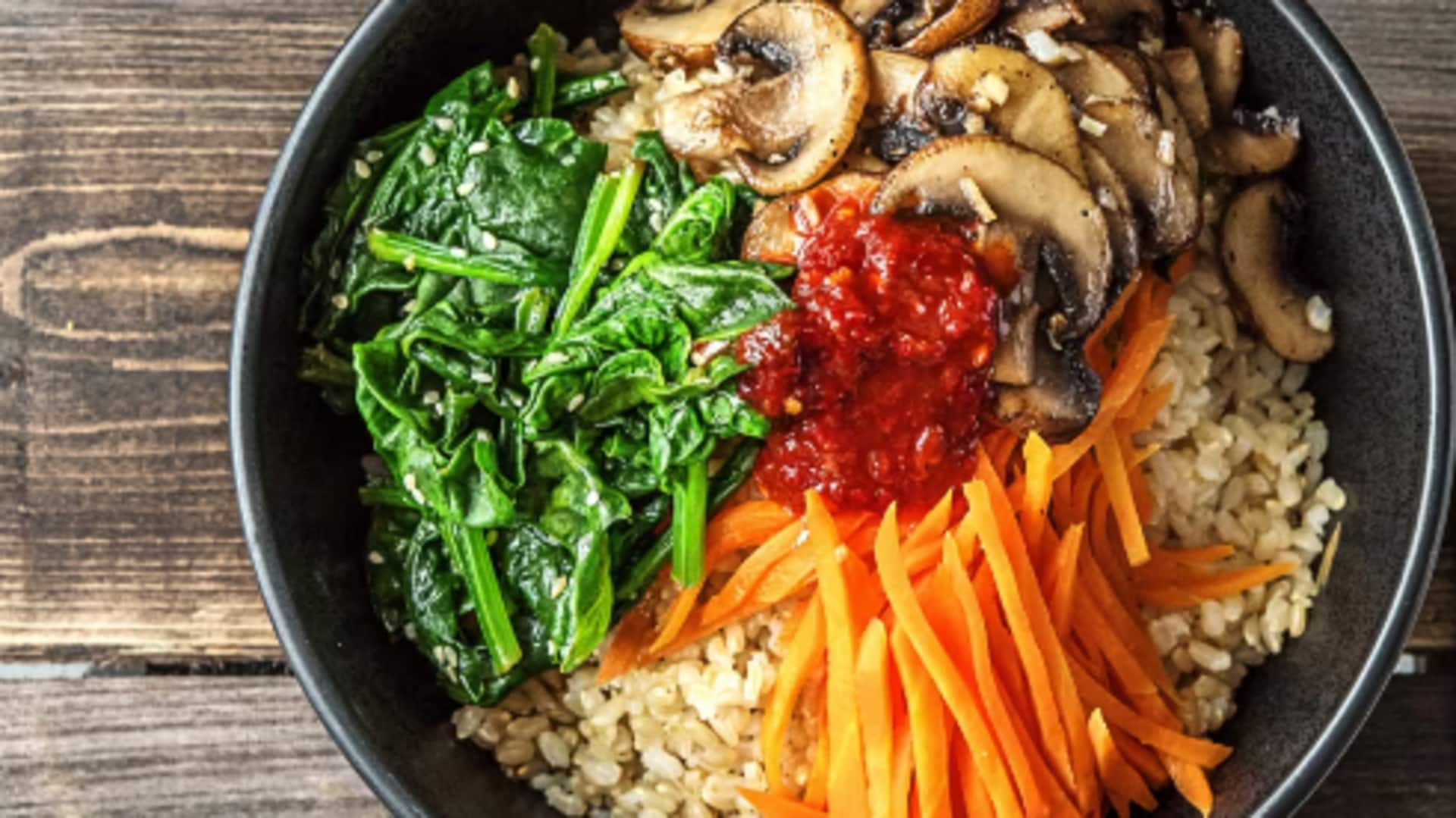
Refer to this Korean vegan bibimbap bowl recipe
What's the story
Bibimbap, a traditional Korean dish, is celebrated for its vibrant colors and diverse flavors. It typically includes vegetables, meat, and often an egg. This guide offers a vegan, eggless version that still embodies the dish's essence. Rooted deeply in Korean culture, bibimbap transcends mere food; it's a rich cultural experience. Let's embark on the journey of cooking this exquisite dish.
Ingredients list
Gather the following ingredients
For vegan bibimbap, gather one cup cooked short-grain rice, half a cup each of julienned carrots, sliced mushrooms (shiitake or button), spinach, and one small julienned zucchini. Add two tablespoons soy sauce or tamari, one tablespoon sesame oil, two cloves minced garlic, and salt to taste. Serve with gochujang on the side and garnish with sesame seeds.
Step 1
Prepare the vegetables
Begin by blanching the spinach in boiling water for thirty seconds until wilted. Then, transfer it to ice water to halt cooking. Squeeze out excess water. In separate pans, saute carrots and zucchini with sesame oil for about three minutes each, until slightly softened. Cook mushrooms with minced garlic until they release moisture and are fully cooked.
Step 2
Cook rice perfectly
For bibimbap bowls to be truly satisfying, having perfectly cooked rice is key. Rinse your rice under cold running water until the water runs clear to remove excess starch, which can make rice sticky. Cook according to package instructions, but ensure it remains slightly al dente rather than mushy—this usually means reducing cooking time by two or three minutes from what's suggested.
Step 3
Assemble your bibimbap bowl
Now comes the fun part: assembling your bowl! Start with a base layer of rice at the bottom of each bowl. Then arrange your prepared vegetables neatly on top in sections around the bowl—you can create a visually appealing pattern or simply place them randomly according to preference. Drizzle with soy sauce (or tamari) and sesame oil evenly over everything.
Step 4
Final touches
The final step is adding flavor enhancers that bring this dish together: Dollop gochujang on top according to how spicy you like your food and sprinkle sesame seeds generously over everything for added texture and nuttiness. Your vegan bibimbap bowls are now ready to serve. Enjoy this healthy yet hearty meal that brings traditional Korean flavors into any home kitchen without compromising dietary preferences.